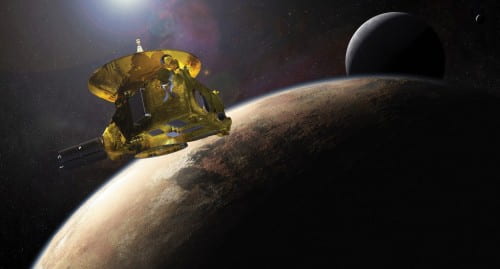
William McKinnon
McKinnon’s long career as a planetary scientist has been marked by a series of exciting discoveries and new explorations. But perhaps the most thrilling feat he has witnessed to date occurred July 14, 2015 when NASA’s New Horizons spacecraft flew through the Pluto system, capturing extraordinary images and other data that illuminated the complex geological world of the farthest planet in the classical solar system.
The Washington University professor has been a member of the New Horizons science team since its official beginning in 2001, but his association with the project can be traced back to an underground scientific movement that started about 25 years ago. McKinnon was there, watching it grow into a full-fledged mission that culminated with the spectacular Pluto flyby.
For some, the New Horizons mission represents a capstone to a half-century of planetary exploration; to others like McKinnon, the Pluto system also beckons as a gateway to a vast new realm beyond Neptune – the Kuiper Belt – whose ultimate boundary remains unknown.

As part of an extended mission, the spacecraft is expected to head farther into the Kuiper Belt to examine another of the ancient, icy mini-worlds in that vast region, at least a billion miles beyond Neptune’s orbit.
So what does it take to explore a remote world at the very edge of our solar system, and what purpose does that serve?
These questions and others will be considered by McKinnon in his talk, “Reaching the Final Frontier: NASA’s New Horizons Mission to Pluto…and Beyond!” scheduled for Thursday, October 27 at 4 p.m. in Graham Chapel.
For someone wanting a career that continually produces new frontiers for exploration, McKinnon chose well. The last thirty plus years of planetary exploration can be characterized by both the unveiling of the outer solar system and the growing understanding of impacts in solar system evolution – two of McKinnon’s major research interests. More specifically, he studies the icy satellites of the outer solar system and the physics of impact cratering.
Among his most notable honors include the 2014 Gilbert Award from the Geological Society of America for his outstanding contributions to planetary geology, two Group Achievement awards from NASA, and an asteroid that bears his name. In addition, he is a fellow of the American Association for the Advancement of Science.
For more on the New Horizons Mission: Johns Hopkins and NASA
Read the story in the Source.